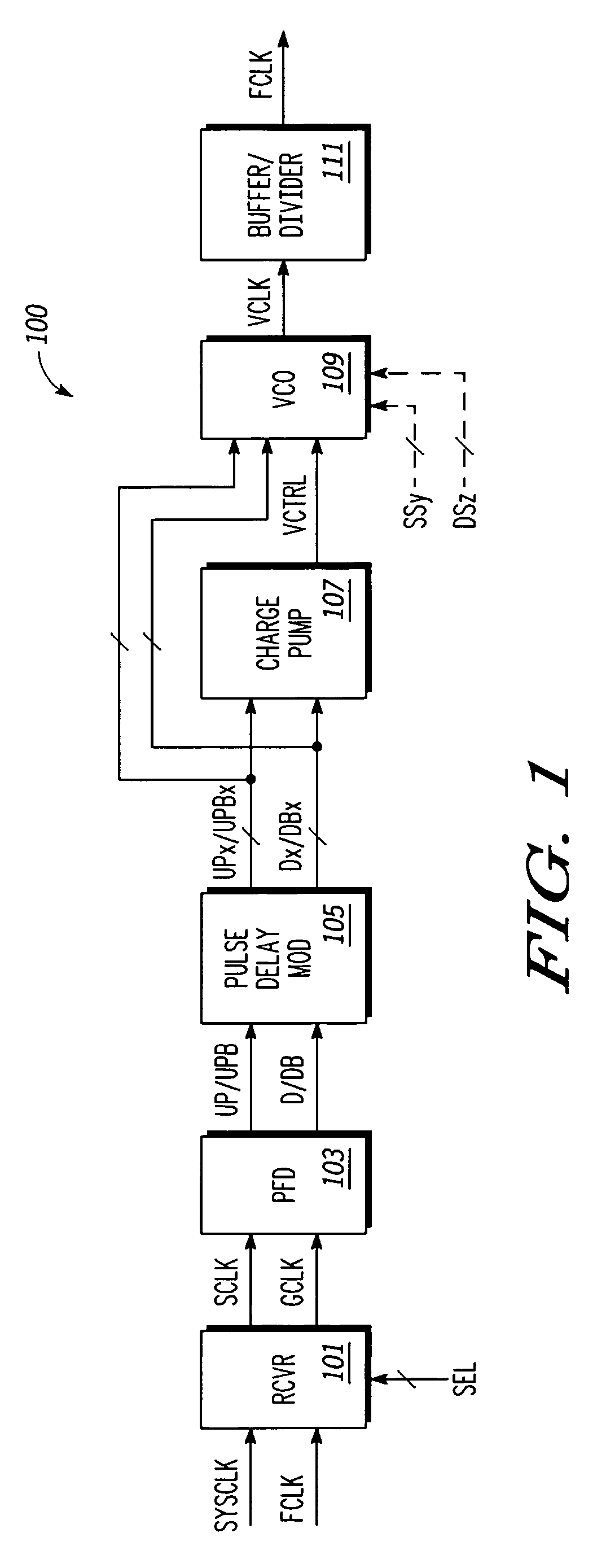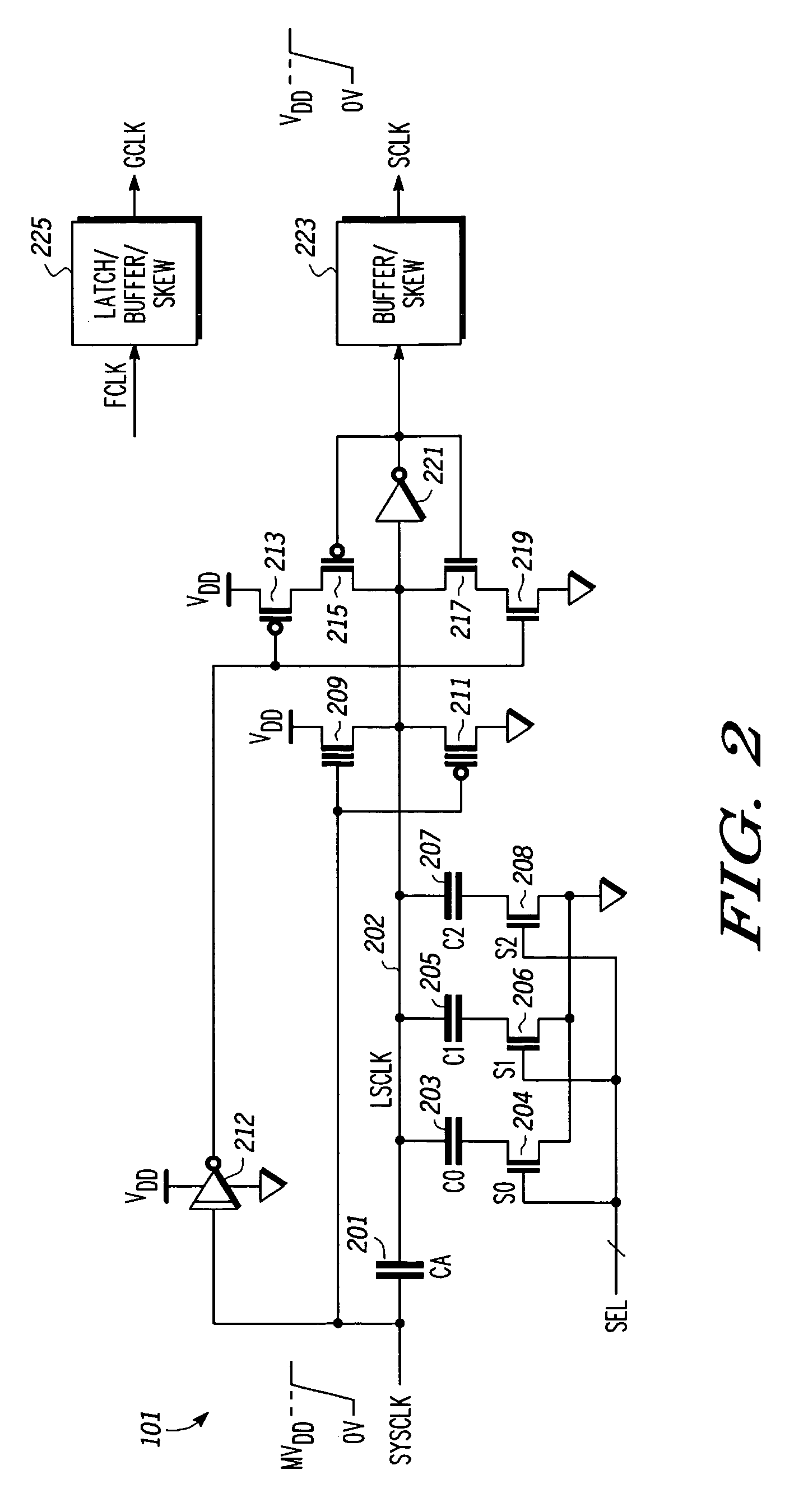Fully programmable phase locked loop
a phase lock loop, fully programmable technology, applied in the field of electronic devices, can solve the problems of reducing the size of electronic devices, not being able to scale well, and not being able to meet the needs of newer process technologies
- Summary
- Abstract
- Description
- Claims
- Application Information
AI Technical Summary
Problems solved by technology
Method used
Image
Examples
Embodiment Construction
[0019]The following description is presented to enable one of ordinary skill in the art to make and use the present invention as provided within the context of a particular application and its requirements. Various modifications to the preferred embodiment will, however, be apparent to one skilled in the art, and the general principles defined herein may be applied to other embodiments. Therefore, the present invention is not intended to be limited to the particular embodiments shown and described herein, but is to be accorded the widest scope consistent with the principles and novel features herein disclosed.
[0020]FIG. 1 is a block diagram of a phase locked loop (PLL) 100 implemented according to an exemplary embodiment of the present invention. The PLL 100 includes an output for providing an output clock signal (FCLK) that may be at the same frequency, a fractional frequency, or multiple frequency of a reference or system clock signal referred to as SYSCLK. The SYSCLK and FCLK sig...
PUM
 Login to View More
Login to View More Abstract
Description
Claims
Application Information
 Login to View More
Login to View More - R&D
- Intellectual Property
- Life Sciences
- Materials
- Tech Scout
- Unparalleled Data Quality
- Higher Quality Content
- 60% Fewer Hallucinations
Browse by: Latest US Patents, China's latest patents, Technical Efficacy Thesaurus, Application Domain, Technology Topic, Popular Technical Reports.
© 2025 PatSnap. All rights reserved.Legal|Privacy policy|Modern Slavery Act Transparency Statement|Sitemap|About US| Contact US: help@patsnap.com



